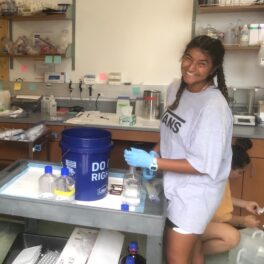The Lō‘ihi Seamount is an active underwater volcano just over a half-mile below the ocean’s surface, 21 miles southeast of the island of Hawai‘i. Now there is a greater understanding of the youngest volcano in the Hawaiian island chain, and the role submerged volcanoes play in Earth’s history, after a scientific expedition in the summer of 2014 led by SOEST researchers aboard Schmidt Ocean Institute’s R/V Falkor. “Lō‘ihi is a very wonderful natural laboratory in our backyard for studying earth processes that have happened in the past,” said Brian Glazer, associate professor of Oceanography. “So while today, Lō‘ihi might be unique, there are times in Earth’s history that much of the global ocean looked like Lō‘ihi does today.”
Read more about it and watch the video at UH System News.














